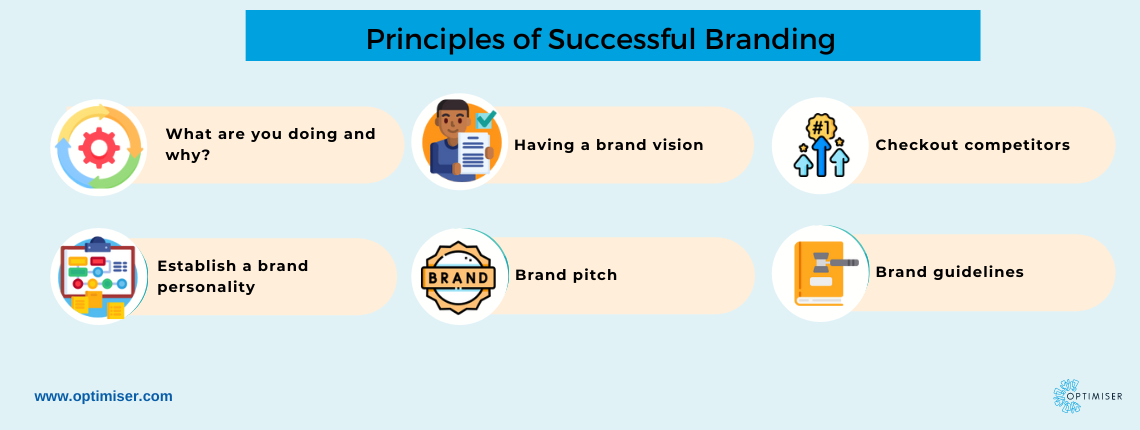
Six Principles that Leads the Foundation for a Successful Branding
The oversight and maintenance of a collective impression of a company is brand management. It links every facet of a business to another. So now the question comes, how do you create a successful business brand?
Here are six branding principles that can help you build a successful brand:
1. What are you doing and why?
This sets your brand values, its purposes and the mandates. Having a driven brand with a purpose will ensure that you forge powerful relationships with your target audience.
Starting with why you are doing what you are doing and following it with how are you doing it, and finally, what are you doing. Having a belief that what you are doing will help your target audience will help you highlight your product.
You can focus on what problem is being solved by your product to resonate with your brand and establish a connection with it. As a result, they will be more willing to try out your products and even give referrals.
2. Having a brand vision
Once you have the 'why' part down, you will determine a vision for your brand. This is the definition of what you wish to achieve. So how to set the perfect brand statement? You can follow these steps:
i. Where do you wish for your business to be in the five to ten years
ii. Writing business statement on 'why' and combining business values
iii. Statement should focus on your business and implies you know what you are doing and why you are doing it
iv. Vision statement should be in present tense
v. Clear and concise language should be used to convey the vision statement. People are not fans of words; they have to google. It tends to slip their minds

3. Checkout competitors
Learning from competitors is very important. It would help you avoid similar mistakes and put your resources to better outcomes. Companies highlight their experience with a certain subject to leverage it as PR material. You can use this information to build your unique selling point. It will allow you to separate yourself from your competitor even if you are selling a similar product.
For example, Optimiser is one of many CRM solutions in the market. However, what makes it different is that it is extremely easy to use and its 100 percent customisable ability. Popular CRMs tend to be complicated and are spread over more than one platform. But Optimiser is fully customisable, pay-as-you-go packages and scalable. Anyone who has never used CRM before can use Optimiser easily with a simple demo. Even though the company offers detailed guidance into using the platform to leverage it to the fullest, Optimiser can be used by experts and novices alike.
4. Establish a brand personality
Establishing a brand personality helps your customers decide whether your product is right for them or not. It should speak to them and provide a solution for their problem. A brand's personality will be communicated from the tone, language, type font, and even colours used. This will reflect your brand values and the values of your customers.
For example, a brand advertising crayons uses several colours for advertising the product. Their brand name has watercolour spots to signify the joy children feel when they use the colour. The font used is cursive to attract children's attention, and the tone should be light, easy to understand and convey joy.
.png)
5. Brand pitch
This refers to the tone of voice. As we mentioned above, a brand personality is very much dependent upon the brand's tone. Connecting with the audience will allow your communication to speak to them. In a few words, you should convey that you are selling a product that will resolve their problems.
6. Brand guidelines
In the end, when you have followed through with the other principles, you can create your brand guidelines. These guidelines include the following:
i. Company logo and strapline
ii. Typography
iii. Colour pallette
iv. Digital styling
v. Document styling
These guidelines ensure that your stay consistent with the brand tone and message. Every communication maintained with the customers, sponsors, stakeholders, clients etc., should reflect the well-built brand you aim to popularise in the market.
Summary
Digging into why one is doing what they are is extremely important. Researching the market and, more importantly, your competitors will ensure that you know what you are facing and how you can truly understand your audience. After all, these principles are in place to help you gain insights into the audience's minds and connect with them better.

30 days free trial. No credit card required
 One powerful platform
One powerful platform
 Simple to use
Simple to use
 Comprehensive
Comprehensive



